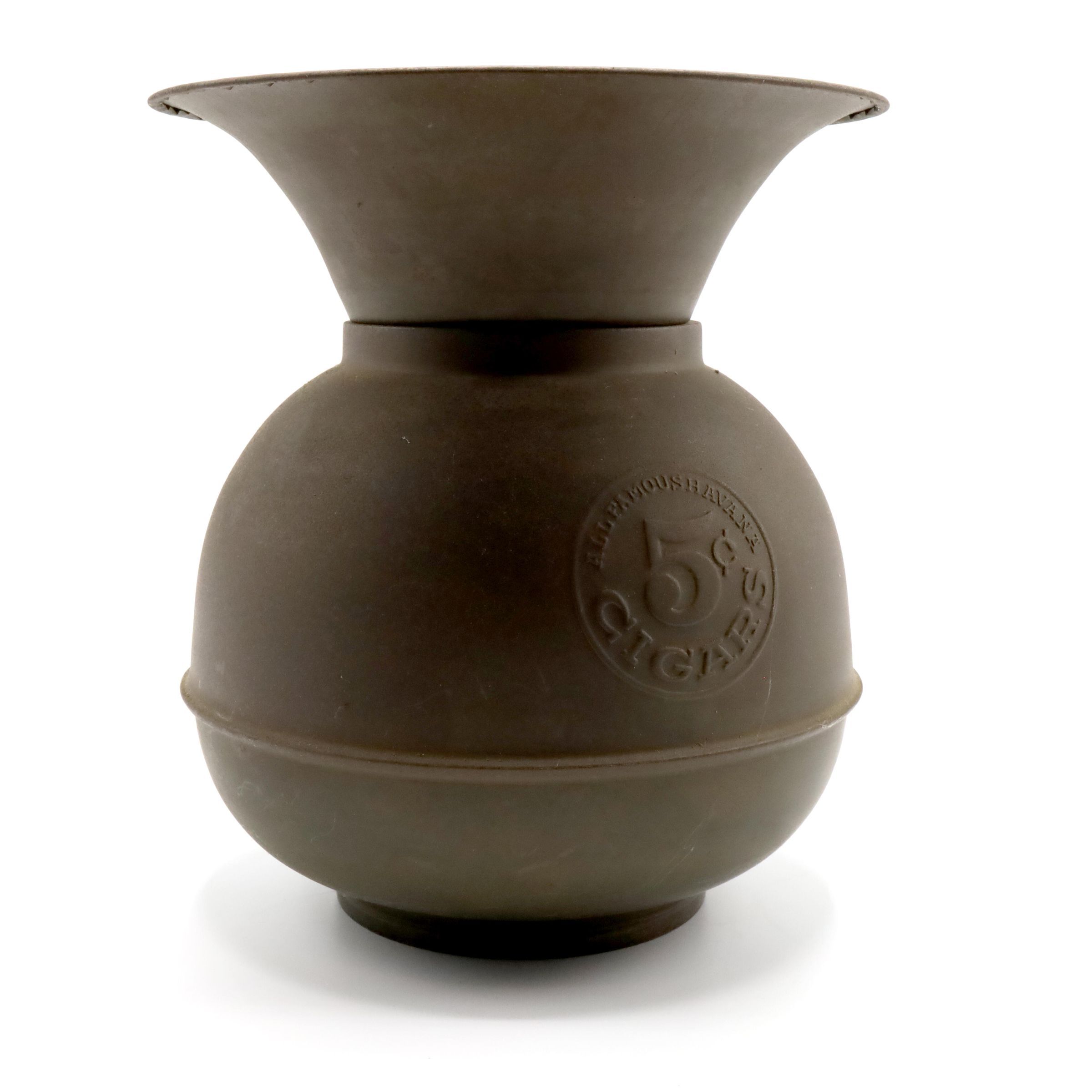Name/Title
Havana SpittoonEntry/Object ID
2022.2.4.5Description
Initially used for chewing tobacco, this handsome brass spittoon shows its embossed circle design, "All Famous Havana 5 cent Cigars," set in the center of its rounded base.Context
Spittoons became common in the 19th century and were prevalent in public places. Brass was the most common material for spittoons at that time. Other materials used included iron, elaborate cut glass, and fine porcelain. Elaborately decorated spittoons were common at higher-class places like expensive hotels.
People suffering from medical conditions such as tuberculosis used spittoons as they coughed up phlegm. Public spittoons contained an antiseptic solution to limit the transmission of disease. Similar devices are still used today by some with tuberculosis.
Public use of spittoons was discouraged following the 1918 flu epidemic, when the use of spittoons began to decline. Chewing gum replaced tobacco as the favorite chew of the younger generation's chew, and cigarettes were considered more hygienic than spit-inducing chewing tobacco. While it was still not unusual in the 1930s to see spittoons in some U.S. public places, vast numbers of old brass spittoons met their ends in the scrap drives of World War II.Location
Building
Gaston MillOhio State Park
Beaver Creek State Park
